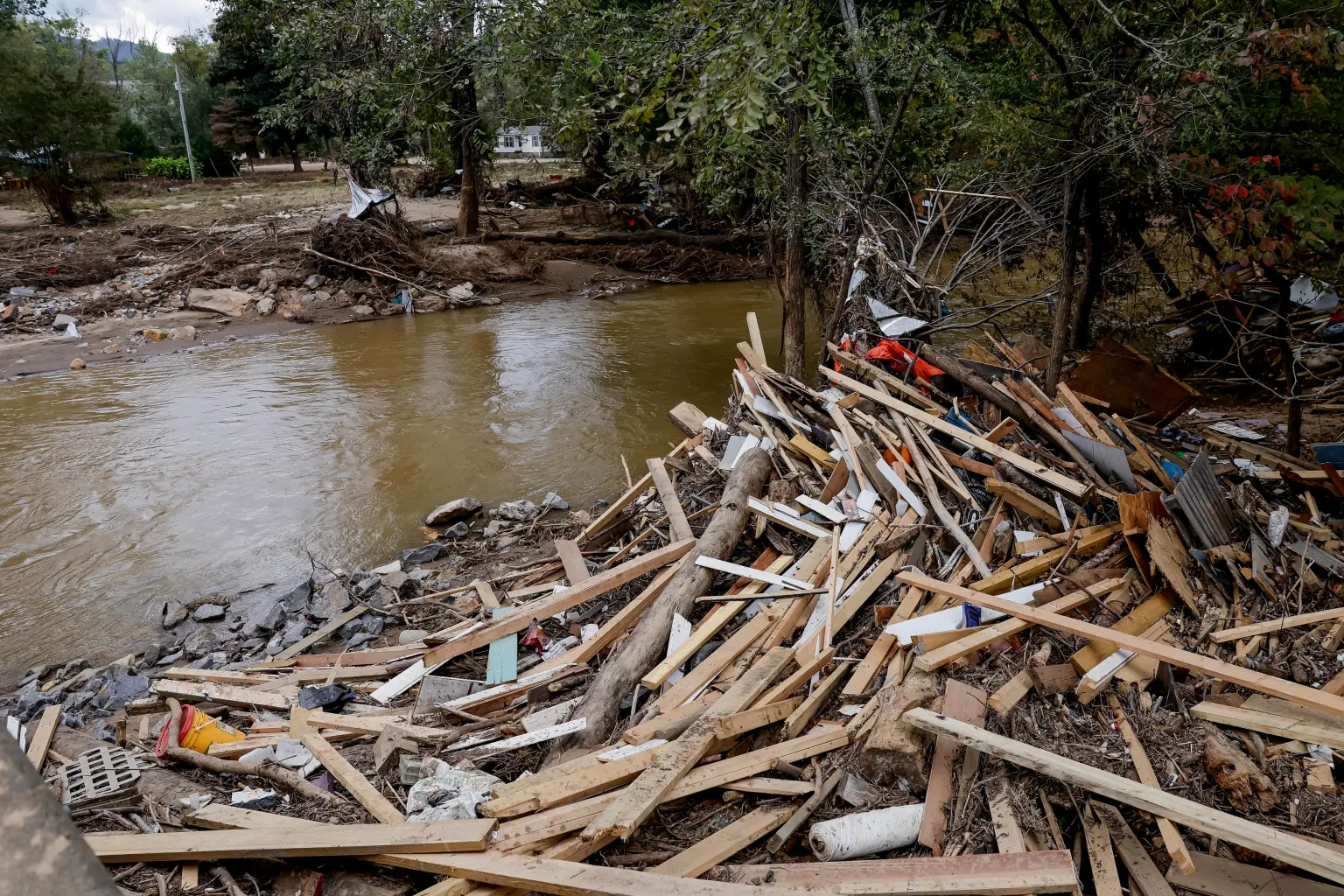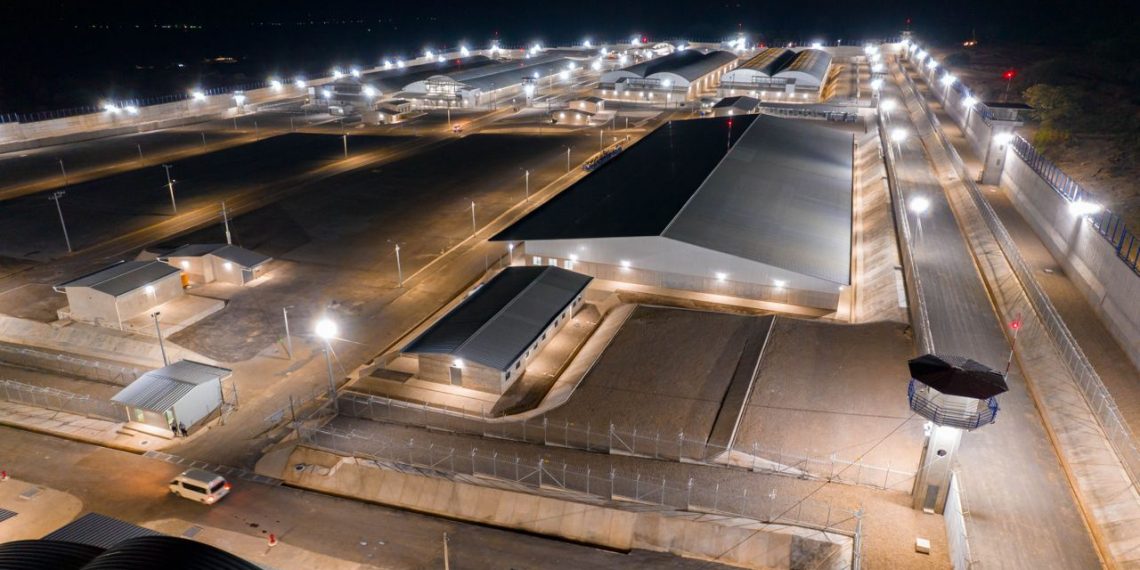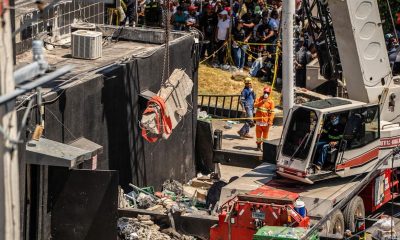International
The deadliest hurricanes in recent US history

After almost a week of having made landfall in northwest Florida as a category 4 hurricane, Helene is currently responsible for more than 200 deaths and is already the second deadliest cyclone recorded in the continental United States in the last 50 years.
Ahead of him, and with a considerable advantage, Hurricane Katrina tops the list, which with 1,392 deaths attributed is among the five most lethal tropical cyclones in the history of the United States, according to the National Hurricane Center (NHC) of this country.
These are the deadliest hurricanes that have impacted the continental United States in the last 50 years:
- Katrina (2005).- The immense hurricane Katrina hit the US coast of the Gulf of Mexico in August 2005. It made landfall first at Keating Beach, Florida, like a category 1 cyclone, and then reached Louisiana and Mississippi with category 3. The highest number of deaths was reported in the city of New Orleans (Louisiana), which recorded catastrophic floods due to the storm surge.
According to NHC records, Katrina is surpassed by the hurricane known as Great Galveston, in Texas, from 1900 and which is estimated to have claimed at least 8,000 lives, as well as Lake Okeechobee, in Florida, from 1928 and responsible for about 2,500 deaths.
- Helene (2024).- She entered through northwest Florida, in the area known as Big Bend, on the night of September 26 with category 4 on the Saffir-Simpson scale (of a maximum of 5) and from there left a tra trile of at least 800 kilometers of devastation by six states in the southeast of the United States. In North Carolina, the death toll amounts to almost a hundred, especially in the area south of the Appalachian Mountains, but the authorities do not rule out that the number will increase in the coming days.
- Ian (2022).- The powerful Hurricane Ian entered the United States through the west coast of Florida and, like Helene, did it with category 4. It left 156 deaths mainly in Florida, in addition to North Carolina and Virginia. After destroying more than 19,000 homes and buildings in Lee County, where Fort Myers is settled, Ian landed again in South Carolina.
- The “superstorm” Sandy (2012).- It produced at least 147 direct deaths and a catastrophic storm surge on the coasts of New York and New Jersey, where it made landfall at the end of October as a gigantic posttropical cyclone.
- Harvey (2017).- It produced rains of historical records in Houston, Texas, a state whose central coast facing the Gulf of Mexico it made landfall on August 25, as a category 4 hurricane. The death toll reached 103 and caused destruction in that state and in Louisiana.
Other noteworthy hurricanes are Agnes (1972), which claimed 128 lives, especially in the states of Pennsylvania, New York, Virginia and Maryland, where significant floods were recorded after the cyclone made landfall in northwest Florida as a category 1 hurricane.
Similarly, Hurricane Audrey, which made landfall in Louisiana in June 1957 with category 3, and was responsible for more than 400 deaths after registering a storm surge of up to 3.5 meters (12 feet) in areas of that state and Texas.
And finally, Hurricane Maria, category 4, which devastated Puerto Rico in September 2017 and is considered the most destructive in the recent history of the Caribbean island, which was almost entirely without electricity. Although at first 67 deaths were attributed to him, a subsequent study by George Washington University commissioned by the Government of Puerto Rico, raised the number of fatalities to 2,975.
International
Maduro signs Economic Emergency Decree to counter U.S. sanctions on Venezuela

The National Assembly of Venezuela approved on Thursday an economic emergency decree presented this week by the government of President Nicolás Maduro, in response to sanctions and tariffs imposed by the United States.
In March, the government of Donald Trump began suspending licenses for foreign oil companies operating with the state-owned Venezuelan oil company PDVSA and imposed secondary tariffs on crude oil and gas exports. Maduro signed the decree on Tuesday, invoking constitutional articles that allow him to declare states of exception, temporarily restrict constitutional guarantees, or declare a state of emergency in the event of disasters, public calamities, or events that seriously threaten the country’s security.
The emergency decree “is to support national production,” said Delcy Rodríguez, Vice President and Minister of Hydrocarbons, during the document’s presentation.
“The affected oil markets, the fall in oil prices, have already surpassed 30% in our measurement, and this, as we say, is just the beginning,” Rodríguez stated, clarifying that Venezuela’s oil and gas production continues.
Rodríguez also mentioned that foreign oil companies are welcome to operate in Venezuela in accordance with local laws.
The United States has set a deadline of May 27 for oil companies operating in Venezuela, including Chevron (U.S.), Eni (Italy), and Repsol (Spain), to wind down their operations and exports.
The decree grants Maduro the authority to implement measures he deems necessary to ensure economic growth, contain inflation, offer special treatment to investors, suspend taxes, or apply exceptions to tax laws, and establish import substitution mechanisms, among other measures.
Maduro and his government have consistently rejected sanctions imposed by the United States and other countries, arguing that they are illegitimate measures constituting an “economic war” designed to cripple Venezuela.
The president and his allies have celebrated what they describe as the country’s resilience despite these measures, although they have historically attributed some economic difficulties and shortages to the sanctions.
This is not the first time Maduro has governed under an emergency decree. In 2016, he signed a similar decree, which was extended until 2021 under the argument of sanctions imposed on Venezuela by Washington.
With the Assembly’s approval, the decree must now be sent to the Constitutional Chamber of the Supreme Court of Justice.
Central America
U.S. Government says deported migrants should remain in El Salvador for life

The United States government believes that the 238 migrants recently deported to El Salvador should remain in the country “for the rest of their lives.”
This was stated by Kristi Noem, the Secretary of Homeland Security, during a press conference. The following day, in a televised cabinet meeting, she reiterated the government’s commitment to continue its campaign to deport over 11 million people living in the U.S. without legal immigration status.
“We are confident that the people (sent to El Salvador) should be there, and they should stay there for the rest of their lives,” Noem told a group of reporters on Wednesday.
Despite the Trump administration’s defense of its decision to transfer the migrants to the Terrorism Confinement Center (Cecot), both testimonies from their families and reports from U.S. media outlets have shown that most of those currently detained there have no criminal backgrounds.
International
Italian biologist found dead in Colombia; investigation underway

An Italian scientist has been found dead in Colombia, local authorities confirmed, after body parts were discovered along a trail in the coastal city of Santa Marta on Sunday.
Municipal police said that a bracelet found among the remains belonged to Alessandro Coatti, a biologist who had recently embarked on a journey across South America. Additional human remains were later discovered in two other locations within the city.
According to the police, Coatti had been staying in a local accommodation and was reportedly visiting the scenic Tayrona coastal area on April 5. His whereabouts since that date remain unknown, prompting an urgent investigation.
“There are currently no further details available; the case remains under investigation,” Colombia’s Attorney General’s Office said on Thursday. “It is still unclear what happened or where.”
-

 Internacionales5 days ago
Internacionales5 days agoErik Prince Backs Ecuador’s Daniel Noboa in Fight Against Crime and “Narcoterrorism”
-

 Central America5 days ago
Central America5 days agoGuatemala’s Legal Chief Shot Dead in Parking Lot: Investigation Underway
-

 Central America4 days ago
Central America4 days agoHonduras Hosts CELAC Summit Amid Regional Concern Over U.S. Deportations
-

 International3 days ago
International3 days agoRussia and US to Meet in Istanbul for Diplomatic Talks on April 10
-

 Central America3 days ago
Central America3 days agoAudit Exposes Major Breaches in Panama Canal Port Concession, $300 Million Owed to State
-

 International4 days ago
International4 days agoTeachers in Southern Mexico Bring Education to Stranded Migrant Children
-

 Central America4 days ago
Central America4 days agoMulino and Orsi Highlight Shared Vision After Panama Joins Mercosur as Associate State
-

 Central America4 days ago
Central America4 days agoTrump Administration Asks Supreme Court to Block Return of Deported Salvadoran
-

 Sports3 days ago
Sports3 days agoNeymar Returns to Santos Training After Month-Long Injury Layoff
-

 International1 day ago
International1 day agoMerengue concert turns to mourning as Jet Set collapse claims 136 lives
-

 Central America1 day ago
Central America1 day agoMexico’s president proposes regional economic summit at CELAC
-

 Central America11 hours ago
Central America11 hours agoNicaragua seeks ICJ intervention in Gaza conflict amid escalating violations
-

 Central America1 day ago
Central America1 day agoCELAC condemns unilateral sanctions in ‘Tegucigalpa Declaration’
-

 Central America1 day ago
Central America1 day agoColombia to host fourth EU-CELAC Summit in November
-

 International3 days ago
International3 days agoMaduro Announces Economic Emergency Decree Amid Growing Tensions with the U.S.
-

 International3 days ago
International3 days agoTransgender Student Arrested at Florida Capitol for Using Women’s Restroom Under New State Law
-

 International3 days ago
International3 days agoScience Brings Back the Extinct Direwolf with Successful De-Extinction Project
-

 International11 hours ago
International11 hours agoItalian biologist found dead in Colombia; investigation underway
-

 Central America11 hours ago
Central America11 hours agoU.S. Government says deported migrants should remain in El Salvador for life
-

 International11 hours ago
International11 hours agoMaduro signs Economic Emergency Decree to counter U.S. sanctions on Venezuela















